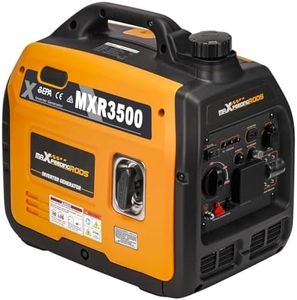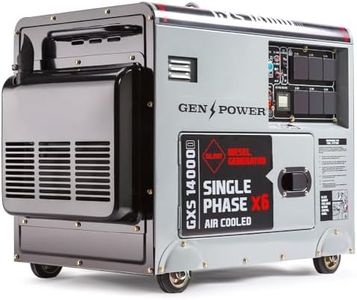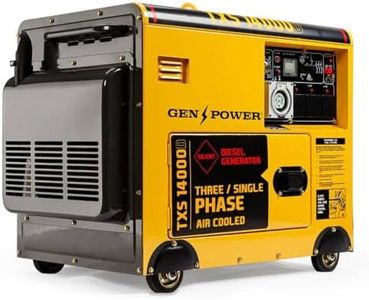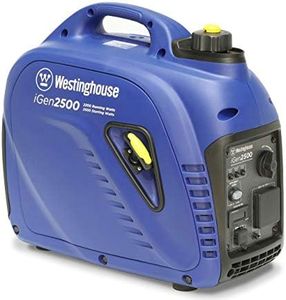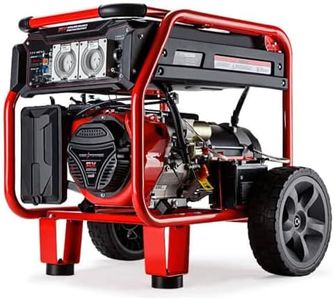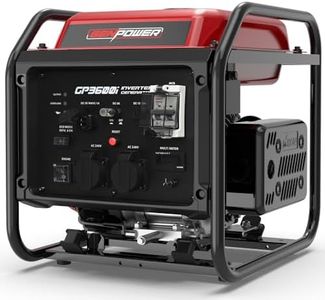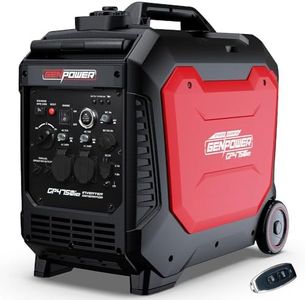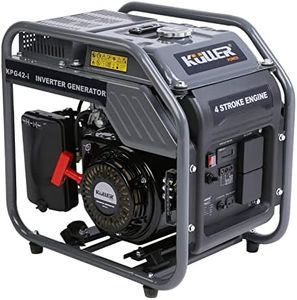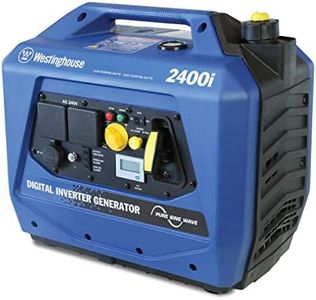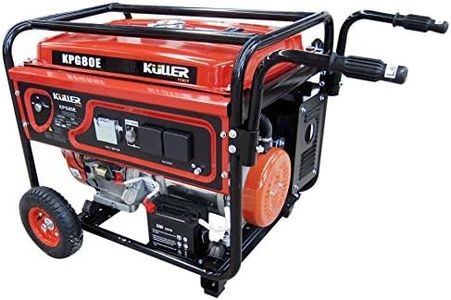We Use CookiesWe use cookies to enhance the security, performance,
functionality and for analytical and promotional activities. By continuing to browse this site you
are agreeing to our privacy policy
10 Best Tailgate Generators
From leading brands and best sellers available on the web.By clicking on a link to a third party's website, log data is shared with that third party.
Buying Guide for the Best Tailgate Generators
Choosing the right tailgate generator is about matching your power needs with a machine that is both portable and reliable. Tailgate generators are popular for outdoor gatherings, sports events, or camping because they let you power small appliances, lights, or even entertainment equipment away from home. To pick the best one, you’ll want to think about how much power you need, how easy it is to carry, how long it will run, and how loud it is during operation. Understanding the main features will help you find a model that fits your specific uses without being over- or underpowered.Power Output (Wattage)Power output is measured in watts and tells you how much energy the generator can produce. This is important because the appliances or equipment you want to plug in each have a watt requirement. Generally, tailgate generators offer lower wattage compared to home backup models, usually in the range of about 1000 to 3500 watts. For just charging phones and running a few lights, anything around 1000 to 1500 watts can be enough. If you want to power larger items like speakers, small TVs, or a portable grill, look for something closer to 2000-3500 watts. Start by listing what you plan to run at your event, check each item's watt requirements, and add them up so you don’t overload the generator.
Portability & WeightPortability refers to how easy it is to move your generator from place to place. This spec usually combines both the weight of the unit and any features like handles or wheels. Most tailgate generators are designed to be light enough for one person to carry, ranging from about 20 to 60 pounds. If you only need to move it short distances or keep it in your car, a heavier unit might be fine. But for maximum flexibility and if you need to walk long distances to your tailgate spot, aim for a generator at the lighter end with comfortable grips or wheels.
Runtime & Fuel CapacityRuntime tells you how long the generator can run on a single tank of fuel. Fuel capacity is the size of the tank, which is closely related. A longer runtime means less refueling during your event. Tailgate generators usually run between 4 to 12 hours depending on the load and tank size. If your tailgating sessions are short, you might not need long runtime. For all-day events or if refueling would be inconvenient, look for a generator with a bigger tank or higher efficiency.
Noise LevelNoise level is how loud the generator is while running, measured in decibels (dB). This is important because a noisy generator can make conversation difficult and might even get you complaints from others nearby. Tailgate generators are designed to be quieter than larger models, usually between 50 to 70 dB. For comparison, 50 dB is about the sound of a regular conversation, while 70 dB is closer to traffic noise. If you value a peaceful environment or plan to use the generator where loud noise is a problem, choose one at the lower end of the scale.
Power Outlets & ConnectionsThe number and type of outlets determine what you can plug into the generator. Most tailgate generators have a mix of AC (standard household) outlets, DC (car charger style) ports, and sometimes USB ports. Think about what devices you plan to use. If you have several gadgets and appliances, make sure the generator has enough outlets for them, ideally with types that suit your devices without needing extra adapters.
Fuel TypeMost tailgate generators run on gasoline, but some can use propane or even dual fuel, letting you pick what’s convenient or available. Gasoline is easy to find and works well for short use, whereas propane can be cleaner and easier to store. If you want extra flexibility or plan to store fuel for a long time, consider a model that allows you to switch between fuels.
